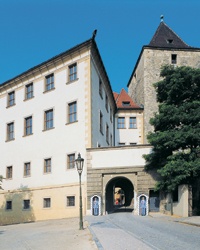 Courtesy Lobkowicz Palace Lobkowicz Palace
In a fairy-tale twist, a historic Czech palace is reclaimed—and restored—by its rightful owner.
Courtesy Lobkowicz Palace Lobkowicz Palace
In a fairy-tale twist, a historic Czech palace is reclaimed—and restored—by its rightful owner.
For much of its existence, the 16th-century Lobkowicz Palace, housed within the Prague Castle complex, has served as the decked-out stronghold of one of Bohemia’s most distinguished noble families. The palace’s 18th-century owner, Joseph František Maximilian, subsidized some of Beethoven’s best works, and the Thirty Years’ War was kindled on its doorstep in 1618 when outraged Protestants chucked two Hapsburg officials out a castle window. (After landing in heaps of dung, the officials were taken in by the sympathetic Lobkowiczes.)
In the 20th century, the palace proved a less secure refuge: invading Nazis took possession, followed by the Communist government in 1948. The Lobkowicz family escaped to America, and their looted palace slipped into decrepitude over four decades. Following the collapse of the Iron Curtain, however, Boston-born descendant William Lobkowicz learned Czech and braved the country’s tangle of restitution laws to reclaim the vast majority of his family’s property—10 historic palaces and castles, including the Lobkowicz Palace, which opened as a museum last April.
After a multimillion-dollar restoration (all the money was privately raised by Lobkowicz, a former real estate broker), the palace’s 60 rooms, including a handsome music salon that hosts daily concerts, have been returned to their Baroque and Rococo opulence. Beneath its frescoed ceilings, the building holds a treasure trove of European cultural heritage: original scores of Beethoven’s Fourth and Fifth Symphonies, two paintings by Italian master Canaletto, and Pieter Brueghel the Elder’s 1565 masterpiece Haymaking, possibly the finest example of the artist’s work still in private hands. And now, for the first time in history, it’s all open to the public. 3 Jirská, Prague Castle; 420-602/595-998; lobkowiczevents.cz.